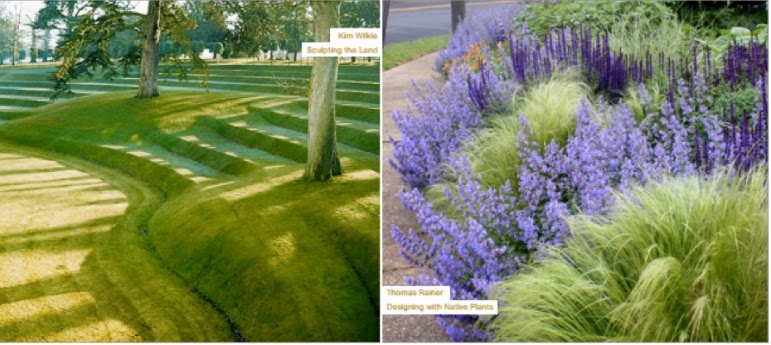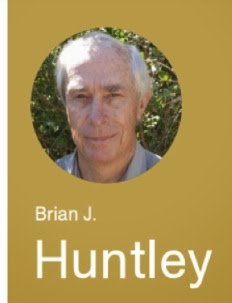 |
| Nelson Mandela from autobiography: Long Walk to Freedom |
The world mourns the loss of Nelson Mandela (1918-2013): a
great teacher, icon, world leader, father, Nobel Peace price honoree and well,
-- the list of this great man’s accomplishments are too vast and not altogether
appropriate for me to comment on.
But in the wake of Mandela’s passing on to the next life and
the attending coverage of his biography, I became aware that he was a gardener.
Of course.
I should have known that Madiba’s superior, visceral sensitivity
and respect for Mother Nature and all living things would make him a signature
gardener.
Researching Mandela’s connection to gardens and the earth, I
followed the legacy, honorifics, and his book, Long Walk to Freedom: The
Autobiography of Nelson Mandela and its many references to the role of
the garden throughout Mandela’s life.
In Mandela’s memoir there exists more than a few references
to Mandela’s garden experiences, beginning with Madiba’s childhood and early
life garden impressions, supporting the principle horticulture and environment
educators promote: that children who are exposed to gardens early on develop an
enduring romance and devotion to plants and ecology.
Here I will share some of his more important and touching
references to gardens…
Mandela Starts a
Garden
Gardeners and growers the world over cannot help but love
Mandela even more to learn that in his autobiography chapter Robben Island: Beginning to Hope,
gardens play a key role.
It’s best shared in Mandela’s words:
“A garden was one of the few things in prison that one could
control.
To plant a seed, watch it grow, to tend it and then harvest
it, offered a simple but enduring satisfaction. The sense of being the
custodian of this small patch of earth offered a small taste of freedom”
He writes that he saw the garden as a metaphor for certain
aspects of his life.
“A leader must also tend his garden; he, too, plants
seeds, and then watches, cultivates, and harvests the results. Like the
gardener, a leader must take responsibility for what he cultivates; he must
mind his work, try to repel enemies, preserve what can be preserved, and
eliminate what cannot succeed.”
With regard to starting his first real garden at the prison,
he chronicles: “Almost from the beginning of my sentence on Robben Island, I
asked the authorities for permission to start a garden in the courtyard. For
years, they refused without offering a reason.
But eventually they relented, and we were able to cut out a small garden
on a narrow patch of earth against the far wall.”
South African
Horticulture
At this point, gardens and gardening are detailed in
Mandela’s passage.
In many ways, his garden memoirs are not unlike you, me, and
home gardeners the world over.
Please know that South Africa is renowned for its horticulture
and extraordinary plant diversity.
The country’s botanical diversity and heritage informs and
influences every major botanical garden and as a result, our own home gardens.
I was privileged to work at both The New York Botanic Garden
and Brooklyn’s - where our beloved president
and director emeritus of oh-so-many years is Elizabeth Scholtz, the 90+
horticulturist and a South African national.
Scholtz immigrated to the United States for what was intended as a brief
interlude after World War II and turned into a lifelong stay, as she often
jokes.
Mandela launches his garden memories philosophically not
coincidently and then gets to the hands-on gardening pride of task.
He starts by talking about the soil, appropriately
enough.
“The soil in the courtyard was dry and rocky, the courtyard
had been constructed over a landfill, and in order to start my garden, I had to
excavate a great many rocks to allow the plants room to grow. At the time, some
of my comrades jested that I was a miner at heart, for I spent my days at the
quarry and my free time digging in the courtyard.
The authorities supplied me with seeds. I initially planted
tomatoes, chilies, and onion – hardy plants that did not require rich earth or
constant care. The early harvests were
poor but they soon improved.
(Wish he related how he did this…)
“The authorities did nor regret giving permission, for once
the garden began to flourish, I often provided the warders with some of my best
tomatoes and onions.”
It’s striking how even in a prison environment the
gardener’s siren song to share their harvest is universal and transcending.
Continuing, Mandela writes, “While I have always enjoyed
gardening, it was not until I was behind bars that I was able to tend my own
garden. My first experience in the garden was at Fort Hare where, as part of
the university’s manual labor requirement, I worked in one of my professors’
gardens and enjoyed the contact with the
soil as antidote to my intellectual labors. (My emphasis to highlight how Mandiba instinctively
know the importance of soil and its myriad benefits.)
He notes that he began to order books on gardening and
horticulture. (See, garden books do matter!)
Mandela says he studied different gardening techniques and
types of fertilizer.
Again, like many of us – he recalled how, “I did not have
many of the materials that the books discussed but I learned through trial and
error.”
Haven’t we all gone through this gardening experience, too?
Continuing, he says “I wrote Winnie two letters about a particularly
beautiful tomato plant, how I coaxed it from a tender seedling to a robust
plant produced deep red fruit.”
What gardener doesn’t relate to this sweet gardening
triumph?
Sadly, we can also relate to the less than successful turn
of events when Mother Nature just seems to have other outcomes in mind.
Mandela goes on to share how a change in circumstances
“either through some mistake or lack of care, the plant began to wither and
decline, and noting I did would bring it back to health.
He writes, “When it finally died, I removed the roots from
the soil, washed them, and buried them in a corner of the garden.”
Early lesson in composting for most of us! I would like to image so too for Mandela. Yet
he goes on to conclude this recollection in a more romantic vein.
He writes that he “he did not want our relationship (with
Winnie) to go the way of that plant, and yet I felt that I had been unable to
nourish many of the most important relationships in my life.”
Tata concludes here with great wisdom: “Sometimes there is
nothing one can do to save something that must die.”
Pollsmoor Garden
Later, after Mandela was moved to Pollsmoor prison in
Johannesburg, he writes of the change from the “natural splendor of Robben
Island” (only Mandela could refer to his former jail thus! He does admit that
he doesn’t take to change. Also not
unlike most people.
After some time
in Pollsmoor Mandela recounts, “The Bible tells us that gardens preceded
gardeners, but that was not the case at Pollsmoor, where I cultivated a garden
that became one of my happiest diversions. It was my way of escaping from the
monolithic concrete world that surrounded us. Within a few weeks of surveying
all the empty space we had on the building’s roof and how it was bathed the
whole day, I decided to start a garden and received permission to do so from
the commanding officer.
“Each morning,
I put on a straw hat and rough gloves and worked in the garden for two hours.
Every Sunday, I would supply vegetables to the kitchen so that they could cook
a special meal for the common-law prisoners. I also gave quite a lot of my
harvest to the warders, who used to bring satchels to take away their fresh
vegetables.”
Memoir Grows in
the Garden
In his autobiography Mandela notes how he was able to preserve
his manuscript – in the Robben Island prison garden in the chapter Beginning
to Hope.
In his effort to “keep the idea of the struggle before the
people,” he and his cohort determined he should write a memoir. At the risk of their own imprisonment or
their business closure, he was pressed to write his recollections.
Mandela says he was so excited, he wrote the draft in four
months – the words pouring out of him like a harvest. (Love the agriculture reference)
The garden was a sanctuary and held his secretes in safety
and silence.
Mandela writes that in order to safeguard the manuscript,
“We did the only thing we could do: we buried it in the garden in the
courtyard. Surveillance in the courtyard
had become careless and sporadic. He
says the warders were rather careless and could not see the southern, isolated
area where there was a small garden.
“I had casually inspected this area on my early morning
walks, and it was there that I decided to bury the manuscript.’
In three separate places.
You must read the book to learn the full drama of the
manuscript in the garden.
The burying of the book in the garden and the role of the
future leader, along with the soil is a garden adventure of a unique sort. An
intrigue that alone is worth reading the book from a gardener’s perspective.




















